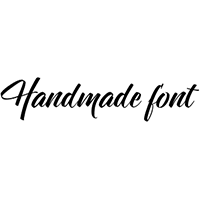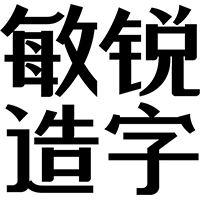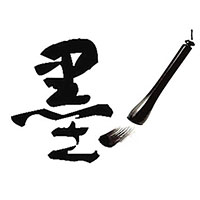The First Female Typographer
In the fifteenth century women had few career opportunities. Few, bar those in the higher social classes were even sent to school, and women were not admitted to universities (Oxford university didn't permit women to matriculate or graduate until 1920). Their options were very limited and pessimistically and perhaps a little exaggeratedly summed up by Sherrill Cohen, who wrote that medieval women faced just three options: 'marriage, monasticism, and prostitution.' (Cohen, p. 170). For those who did not join a convent, marriage came early: 'an unmarried girl of sixteen or seventeen was a catastrophe.' (Plumb, p. 132).
During the Middle Ages we witness the establishment of universities and the concomitant flourishing of education, but few believed that women could benefit from an education, from reading and writing. Perhaps Victorian romanticism is responsible for painting a fantastic or rather idealized picture of women during the Middle Ages: Maidens in pretty gowns, prince suitors — something more akin to Disney than historical fact. The predominant view — sponsored by Church and State — was that women should eschew vanity, ambition, and literature in favor of female labors, chastity, and prayer.
"The convent represented another option for women. For the most part, the best positions in convents were only open to women of high birth. Poorer women could join as lay sisters, where they did much of the domestic work of running a convent, but the choir was largely for upper class women."
— Megan Ingenito
The craze of torturing and burning witches really took off in the fifteenth century and coincides with the so-called Witch-Bull[1] of 1484 issued by Pope Innocent VIII, wherein he sanctioned the inquisition to pursue any means necessary to prosecute and execute witches (mostly women). The Papal Bull was addressed to the inquisitor Henry Institoris (Heinrich Kramer) who soon after, in 1487, published Malleus Maleficarum or Hammer of Witches, a witch-hunters guide that concerned itself with questions like 'Concerning witches who copulate with devils. Why is it that women are chiefly addicted to evil superstitions?'
"No matter which way I looked at it and no matter how much I turned the matter over in my mind, I could find no evidence from my own experience to bear out such a negative view of female nature and habits. Even so, given that I could scarcely find a moral work by any author which didn't devote some chapter or paragraph to attacking the female sex, I had to accept their unfavourable opinion of women since it was unlikely that so many learned men, who seemed to be endowed with such great intelligence and insight into all things, could possibly have lied on so many occasions…"
— The Book of the City of Ladies by the French poet Christine de Pisan (1404).Despite that…
Prior to the introduction of printing in the mid-fifteenth century women were involved in the production of manuscripts. The history of nuns working as scribes can be traced back to the early days of the Church. Eusebius (263–339 A.D.) speaks of such women being employed as copyists. (Putnam, p. 53) Other women like Mahaut of Artois (1268–1329) served as patrons. Then there are the numerous female scribes of Schäftlarn, Admont and Wessobrunn in twelfth-century Bavaria; Clara Hatzlerin of Augsburg who worked as a copyist during the third quarter of the fifteenth century; or miniaturists and illuminators like Jeanne de Montbaston in Paris in the mid-fourteenth century.
Detail, perhaps showing portraits of husband and wife Richard & Jeanne de Montbason. From: Ms. fr. 25526, fol. 77v. Image courtesy of Bibliothèque nationale de France. The first female typographers
From 1476 to 1484, the Dominican nuns of Sanctum Jacobum de Ripoli were printing in Florence. They published many books and undoubtedly numerous broadsides. A logbook of the convent press was discovered in the eighteenth century and contains the earliest record of a female compositor, a nun, who in 1481/82 typeset a folio edition of Il Morgante, (ISTC: ip01123500) a work by Italian poet Luigi Pulci (1432–84).
In Mantua, northern Italy, about 1476, Estellina Conat, wife to physician and printer Abraham Conat was involved in the typesetting of one of the earliest printed Hebrew books[2], a small (octavo) edition of Behinat Olam (ISTC: ij00218520). In the colophon she writes:
"I, Estellina, wife of my master my husband the honored Rabbi Abraham Conat, may he be blessed with children and may his days be prolonged. Amen! wrote this book 'Investigation of the World' with the aid of the youth Jacob Levi of Provence of Tarascon, may he live." — Translation from Amram, p. 32.
It was not uncommon for the wife of a craftsman to work alongside her husband. The atelier and the living quarters of the fifteenth-century print-shop merged into one, so that, even if the wife were not directly working at printing, she would undoubtedly become very familiar with the workings of the business. Wives too were permitted to join the same guilds as their husbands, something that in most instances was not permitted for women not already associated through marriage and familial connections.
"For most of history, Anonymous was a woman."― Virginia Woolf
The very first woman to ever add her name to the colophon of a printed book as its printer isAnna Rügerin, who published two folio editions in the summer of 1484 in the imperial city of Augsburg in southern Germany. Upon the death of her husband, Thomas, it appears that Anna took full control of the print shop.
Colophon from Sachsenspiegel: Landrecht. Augsburg: Anna Rügerin, 22 June 1484. ISTC: ie00024000; Fol. 155v. Image courtesy of Deutsche Forschungsgemeinschaft.
Opening page of Formulare und deutsch rhetorica. Augsburg: Anna Rügerin, 29 July 1484. ISTC: if00245500. Image courtesy of Deutsche Forschungsgemeinschaft.
Anna uses the Gothic type (Type 1:120G) of Johann Schönsperger, who continued using it until 1492. Interestingly, Sheila Edmunds identifies Schönsperger as Anna's brother. In fact Anna'a mother, Barbara Traut Schönsperger's remarried in 1467/68 (when printing was first introduced to Augsburg) to the Augsburg printer, Johann Bämler marking 'the beginning of an extensive family network actively engaged in Augsburg's book trade.' (Edmunds, p. 180)
Type 1:120G used by both Anna Rügerin & Johann Schönsperger.
In the sixteenth century many more women were involved in book production. Helen Smith estimates that 'between 1550 and 1650, at least a hundred and thirty-two women were actively involved in the production or sale of books aimed at the British market' alone. (Smith, p. 163) Most worked in publishing and bookselling rather than printing and, of those who did, very few signed their books, remaining anonymous or simply referring to themselves as heirs to the master printer. One of the few exceptions was Girolama Cartolari, (Parker, p.527) a native of Perugia who, upon the death of her husband in 1543, ran her print shop in Rome right up until 1559.
Facsimile detail of the colophon from Girolama Cartolari's (here signedHieronymam de Cartulariis) Opera Andreae Thurini Pisciensis Pauli III pont. max. Medici. Rome, 1545. (USTC: 861417). Image courtesy of Bibliothèque nationale de France.
Though we have scant records of the very earliest female printers and typographers, in the present-day, women bookmakers, editors, printers, type designers, and typographers are, in some respects, heirs to the likes of Anna Rügerin and Estellina Conat, and many other anonymous women who, to this day, continue to enlighten and inspire.
Notes
[2] The first dated Hebrew printed book is Perush ha-Torah, 17 Feb. 1475 (ISTC: is00625180).
Selective Bibliography
Beach, Alison I. Women as Scribes: Book Production and Monastic Reform in Twelfth-Century Bavaria
. Cambridge University Press, 2004.
Booton, Diane E. Manuscripts, Market and the Transition to Print in Late Medieval Brittany.
Ashgate, 2010.
Conway, M. The 'Diario' of the Printing Press of San Jacopo di Ripoli (1476–1484). 1999.
Edmunds, Sheila. Anna Rügerin Revealed. Journal of the Early Book Society for the Study of Manuscripts and Printing History , 2., (1999): pp. 179–181.
Gies, Frances & Joseph. Women in the Middle Ages.
1978.
Hay, Dennis. Europe in the Fourteenth and Fifteenth Centuries.
1966
Leibowitz, Joshua. Journal of the History of Medicine and Allied Sciences, 1958, vol. 13, issue 4, pp. 564–566.
Newman, Martha. Review of Beach, Alison I., Women as Scribes: Book Production and Monastic Reform in Twelfth-Century Bavaria. H-German, H-Net Reviews. February, 2006.
Parker, Deborah. Women in the Book Trade in Italy, 1475-1620. Renaissance Quarterly Vol. 49, No. 3 (Autumn, 1996), pp. 509-541. The University of Chicago Press.
PlumbJ. H. The Italian Renaissance.
2001.
Putnam, A.M. Books and their Makers During the Middle Ages. Vol. 1. 1962 (reprint).
Skemer, Don C. Binding Words: Textual Amulets in the Middle Ages
Smith, Helen. "Print[ing] Your Royal Father Off": Early Modern Female Stationers and the Gendering of the British Book Trades. Text, Vol. 15, (2003), pp. 163-186. Indiana University Press.
Credits & Acknowledgements
ISTC: Incunabula Short Title Catalogue.
USTC: Universal Short Title Catalogue.
Thank you to the graciousMargaret Schaus, Lead Research & Instruction Librarian at Haverford College and Editor of Feminae: Medieval Women and Gender Index. And thanks toDiane Booton,Karen Nipps,Misha Beletsky, andReiko Masudafor help in locating hard-to-find Journal articles.

































 闽公网安备35010202000240号
闽公网安备35010202000240号